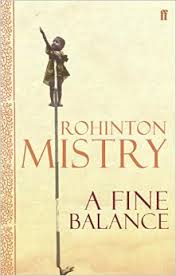
If you have read the extraordinary Tell Me How it Ends, it will be clear that there is a topical continuation in the narrative of Valeria Luiselli’s latest novel Lost Children Archive. It is no surprise that the subject of migrant children is very much at the centre of this spectacular novel, but it is also a moving study of family dynamics.
As the family takes on a road trip from New York to the border with Mexico, the narrative becomes more and more intimate to the point that the reader feels like another passenger sitting in that car. What I found very moving are the descriptions of the relationship between parents and children. I think that in this novel Luiselli reminds us of the importance of observing our children aiming to understand who they are simply by contemplating them.
‘They look memorable from where I’m sitting: look like they should be photographed. I almost never take pictures of my own children. They hate being in pictures and always boycott the family’s photographic moments (…) Adults pose for eternity; children for the instant’
As they cross the United States, dad tells the kids stories of the native Americans and in particular that of Geronimo. Mum is all about those children desperately trying to cross the Mexico-US border to be reunited with their relatives. Luiselli, as in Tell Me How it Ends drops those bombs that leave you once again stunned. It is a known fact that to start the deportation process (or ‘removal’ as the American authorities like to say) the detention centres (or ICE) are raided. And in that in-between children go missing. Do they escape? Is it better to become a missing person to eliminate the threat of being ‘removed’? How many thousands of children are wandering the streets now desperately trying to find a clue that will get them to mum or dad?
A critical point in the novel is when the family witness the deportation of around 20 children. Girls and boys lined up to board a small plane in an air strip in the middle of nowhere. What a better place, away from the public eye, away from everyone that could care.
‘If they hadn’t gotten caught, they probably would have gone to live with family, gone to school, playgrounds, parks. But instead, they’ll be removed, relocated, erased because there’s no place for them in this vast empty country’.
It has been a long time since I felt the need to mark a book, to make sure I remember those phrases to be able to go back to them again and again. Reading Lost Children Archive made me seriously think about the fragility of a child’s life, and how memories and experiences shape who they will become. Childhood is precious because it is so easily hurt. And of course, the stories of those unaccompanied child migrants keep making me sad and furious but I think we all have to thank Valeria Luiselli for the painful reminder of a reality faced by thousands of kids.
‘The only thing that parents can really give their children are little knowledges (…) this is how you cut your own toe nails, this is the temperature of a real hug, this is how you untangle the knots in your hair, this is how I love you.’
The novel has an unusual but genius structure that revolves around six boxes that are contained in the boot of the car. There are Polaroid pictures snapped by the 10 year-old son, maps, lists, and an impressive number of references to literary works, films and music. Even David Bowie’s Space Oddity plays a phenomenal role in the story. Lost Children Archive is a stunning novel, it’s moving, a little bit sad but worth reading because once again Valeria Luiselli strikes literary perfection.
Lost Children Archive is published in the UK by Harper Collins







 On my last day at work, my wonderful colleagues at Belgravia Books gave me a pile of books that promised to make the wait for baby more bearable and less boring. Well, baby took it’s time and in between cooking and freezing, packing and re packing, going swimming (going floating really) I started a big fat novel called A Fine Balance by Rohinton Mistry.
On my last day at work, my wonderful colleagues at Belgravia Books gave me a pile of books that promised to make the wait for baby more bearable and less boring. Well, baby took it’s time and in between cooking and freezing, packing and re packing, going swimming (going floating really) I started a big fat novel called A Fine Balance by Rohinton Mistry.




